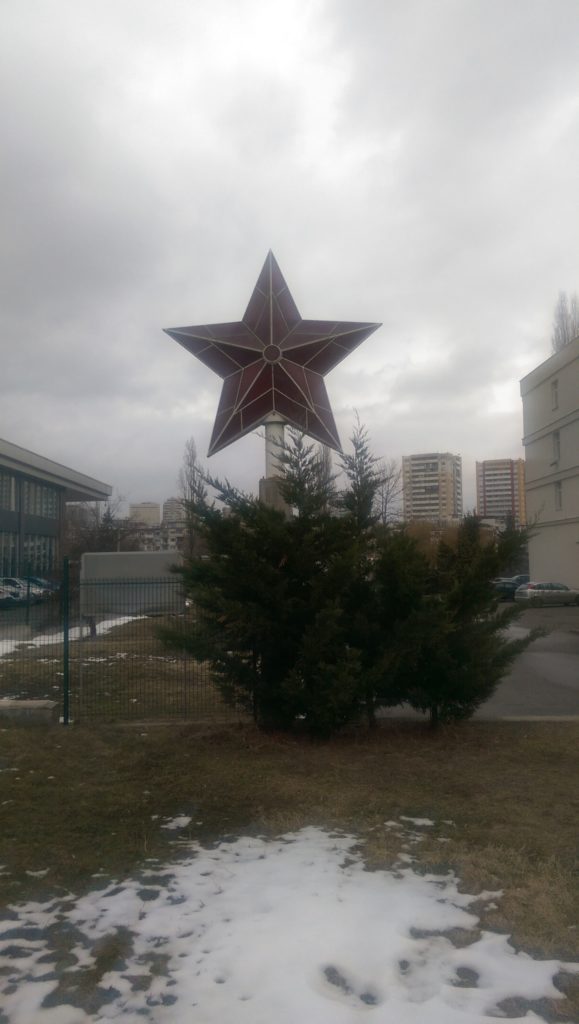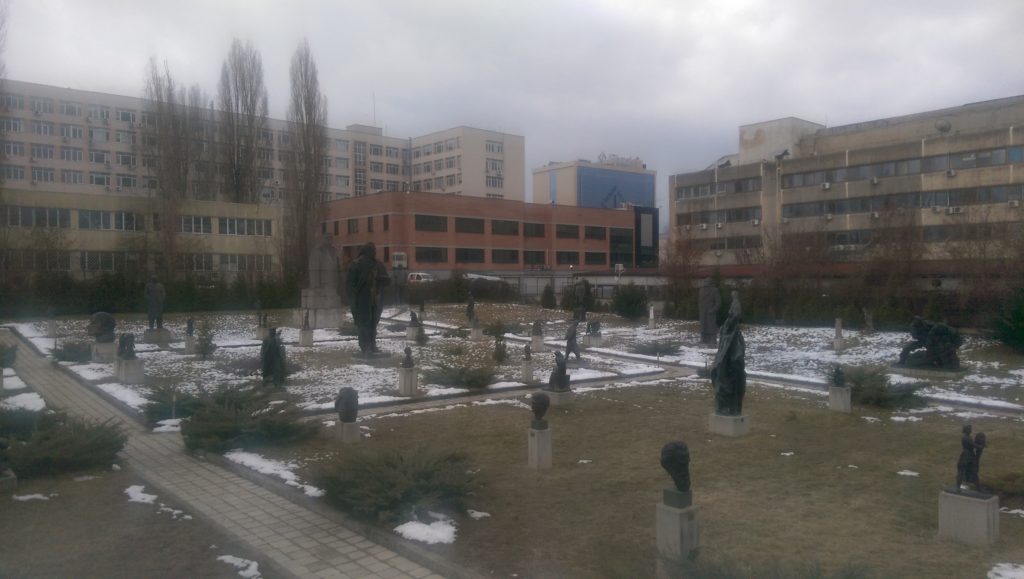

2019 Clarrie Mowforth, Museum of Socialist Art, Sofia.
Clarrie Mowforth, a student on our MSc Creative Industries and Cultural Policy programme tells her about her experience at the Museum of Socialist Art in Sofia, Bulgaria.
As a student of Creative Industries and Cultural Policy, when I travel abroad, (or anywhere) I become acutely interested in cultural attractions on offer to the humble tourist, and of observing the place of culture and heritage within a city. This was no different on a recent trip to Sofia, capital of Bulgaria. Amongst tours, galleries, churches and museums, I found a trip to the Soviet Art Museum, part of the ‘Ministry of Culture’ the most intriguing and thought provoking experience.
Nestled in a sleepy suburb to the South East of the city, and surrounded on all sides by tower blocks, the main draw was the sculpture park containing eighty soviet era statues of all sizes. This is not the first Soviet sculpture park I have visited, there are similar parks in other former soviet cities such as Budapest and Vilnius, where statues once removed from the public eye are now tucked away in discrete, forlorn parks in the shabbier ends of town, often off the beaten tourist path.
What struck me most was how eerie it felt. I accredited this not only to being the sole visitor, but also to the arrangement of the statues, hemmed in close together, busts staring blankly at each other. It felt unnatural. We are not accustomed to viewing statues in such overcrowded proximity to each other. In their former habitats, they were admired independently of each other, standing defiantly alone, often raised up in grand public spaces. Here, they seem cluttered, confused and uneasy, perhaps because the sculptors never intended them to be viewed this way.

I was compelled to wonder why these statues were resigned to such a fate. After the fall of communism in 1989, Soviet ideological relics were ceremoniously removed from the public gaze, not to be displayed in the park until 2011. Footage of the red star which once marked the ‘party house’ being removed by helicopter is a familiar sight here, whilst the star itself now adorns the entrance to the park, protruding crudely from a hedge. Whilst an initial reluctance to re-home the sculptures was understandable, I wonder what decisions were made by whom to move them here.

Perhaps a reluctance to destroy fine works of art, combined with a more economic endeavour to attract tourists (especially those from countries never experiencing socialism) was at play. Perhaps even a will to preserve an albeit uneasy part of national history, perhaps with the forethought that in a few decades time, people will be able to appreciate these figures for their artistry as much as what they represent, with the benefit of historical distance, and free from the disdain of those alive who suffered at the hands of the Soviet regime. Sculpted stone certainly benefits from outliving other art forms, resilient over decades, solid, still and defiant throughout the precarious patterns of human politics.
It is odd to think that these statues were once set out all over the city in prominent places – landmarks, beacons of their era, instillers of national pride and a reminder of who and what was in charge. It is odder to think that they could be so quickly relegated to a small suburban plot, stripped of their magnificence and power, hidden away for their symbolic representations, rather than their carefully crafted, artful physical forms, representing a divide in what they are and what they represent.

Part of me pities the huge, dramatic Lenin, once sternly peering out in the main square onto parliamentary buildings at the centre of the city, now resigned to stare at an indifferent block of flats, surrounded by defeated contemporaries. It seems a fitting metaphor for the Soviet era itself, reduced to a hulking grey form stood unregarded in a tiny park, all the power and ambition of the regime reduced to feeble insignificance.
I must admit, the statues seem peaceful here. No longer imbued with heavy political meanings which they will outlive, happy to exist without the pressure of dutiful representation. This small park at the end of town seems the best these statues could hope for.

